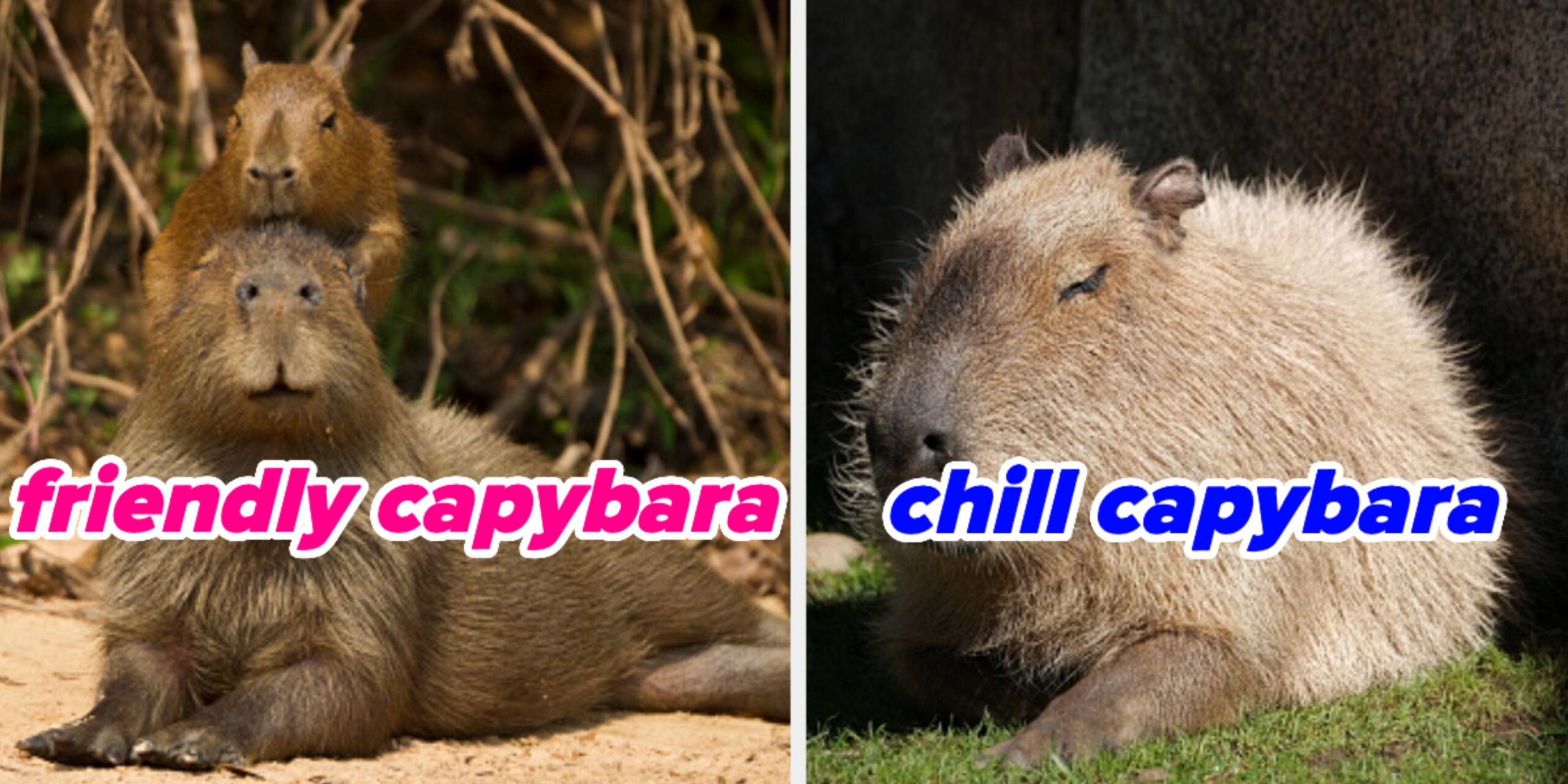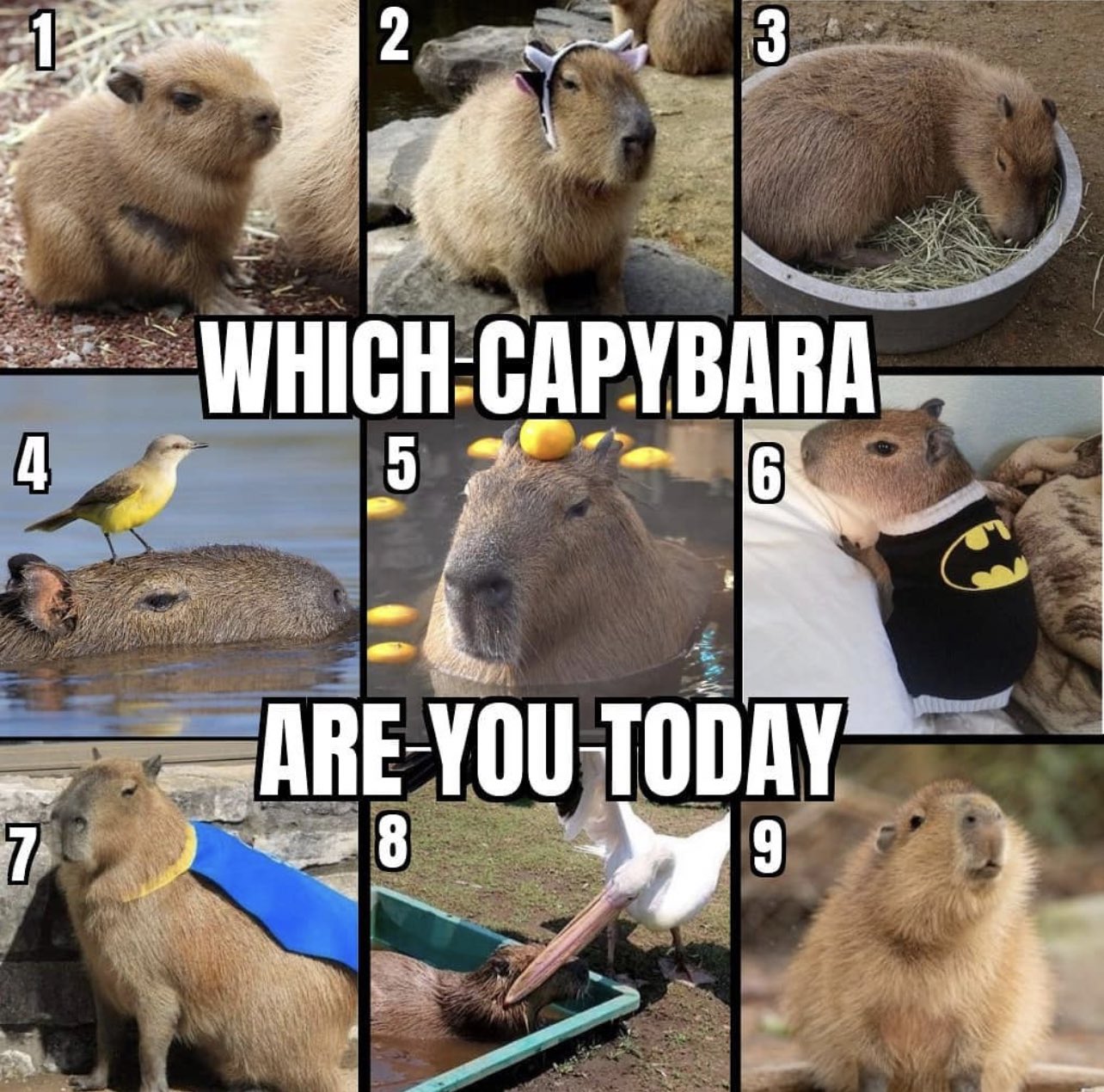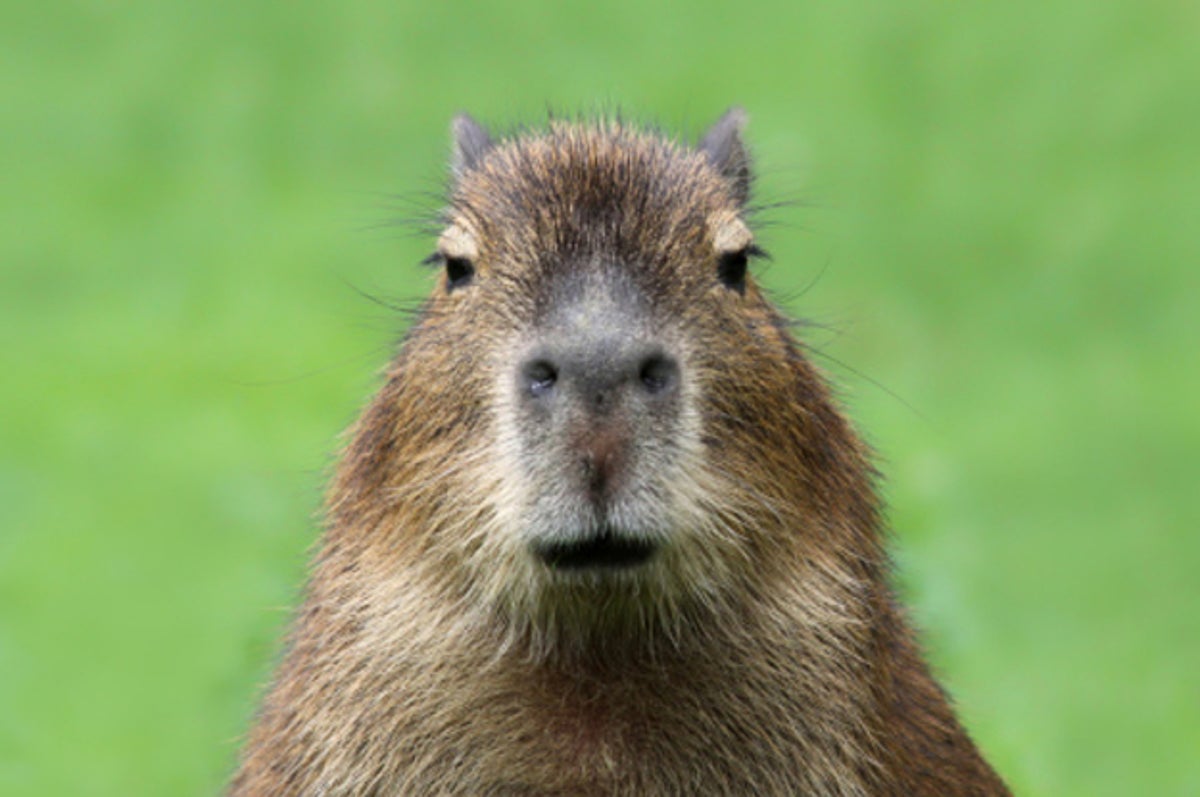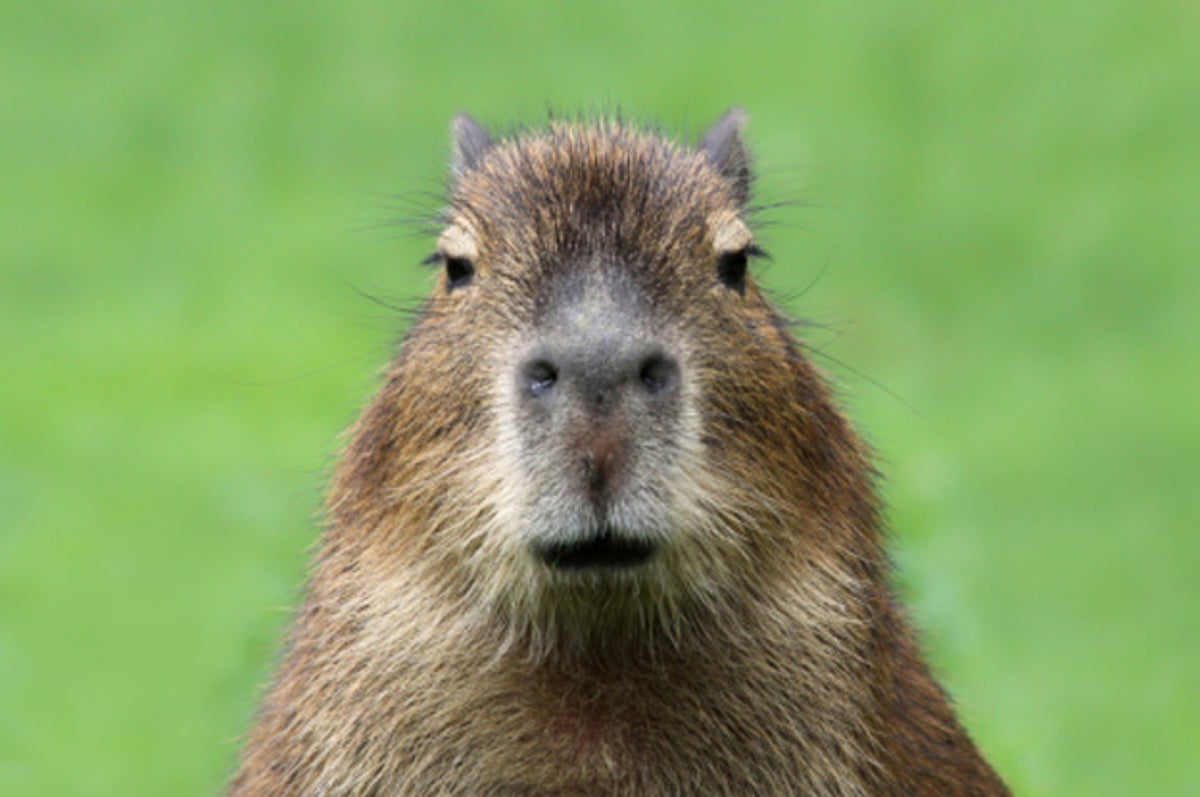Have you ever wondered which capybara you would embody if given the chance? Well, now you can find out! In this article, we will take you on a delightful journey to discover which capybara best matches your personality and traits. Unleash your inner capybara and prepare to be captivated by these charming and lovable creatures. So, let’s dive right in and uncover which capybara you truly are!

Physical characteristics
Size
Capybaras are the largest rodents in the world, reaching lengths of up to 4 feet and weighing between 77 and 146 pounds. They are about the size of a large dog, but with a distinctive shape and appearance.
Body shape
With their long, barrel-shaped bodies, capybaras have a unique silhouette. Their stocky legs are designed for both land and water, making them excellent swimmers. The body of a capybara is covered in coarse, brownish-gray fur that helps them blend into their natural habitats.
Coat color
Capybaras typically have a brownish-gray coat that helps them camouflage in their surroundings. This coloration allows them to blend in with the vegetation and avoid being easily spotted by predators. Their fur is coarse and dense, providing insulation in colder climates.
Eyes and ears
Capybaras have large, dark eyes that are positioned high on their heads, allowing for better visibility while in the water. Their eyesight is adapted for both day and night activities. Their ears are small and rounded, situated on the sides of their head, enabling them to detect sounds from various directions.
Habitat and Distribution
Native Range
Capybaras are native to South America, primarily inhabiting countries such as Brazil, Argentina, and Venezuela. They are most commonly found in the Amazon rainforest and the wetlands of the Pantanal region. These areas provide the necessary resources for their survival, including water, food, and shelter.
Habitat
Capybaras are semi-aquatic animals and prefer habitats near bodies of water, such as rivers, lakes, and marshes. They rely on the water for hydration, cooling down, and escaping from predators. Capybaras are also well-adapted to live in various types of grasslands and forests, as long as there is access to water nearby.
Adaptations to the environment
Capybaras have several adaptations that allow them to thrive in their natural habitats. Their webbed feet make them excellent swimmers, enabling them to navigate through water with ease. Additionally, their eyes and ears are positioned on top of their head, allowing them to keep a lookout for both land and water predators. The capybara’s ability to eat aquatic plants and grasses also contributes to their survival in their chosen habitats.

Diet and Feeding Behavior
Herbivorous diet
Capybaras are strict herbivores, meaning their diet consists entirely of plant material. They primarily feed on various types of grasses, aquatic plants, and fruits. Due to their large size, they have a big appetite and need to consume a significant amount of vegetation each day.
Preferred food sources
Capybaras have a preference for tender, young grasses and aquatic plants. They also enjoy munching on the bark and leaves of trees, as well as consuming fruits and vegetables that they come across in their habitat. Their ability to feed both on land and in water gives them access to a wide variety of food sources.
Feeding habits
Capybaras are grazing animals, meaning they spend a considerable amount of time foraging for food. They will often graze for several hours each day, moving slowly through their habitat to find the best feeding spots. Capybaras have complex digestive systems designed to break down plant material efficiently, allowing them to extract the necessary nutrients from their diet.
Behavior and Social Structure
Semi-aquatic lifestyle
As semi-aquatic animals, capybaras spend a significant amount of time in the water. They are excellent swimmers and can stay submerged for several minutes when necessary. The water not only provides them with a means of cooling down but also acts as a form of protection from predators.
Group dynamics
Capybaras are highly social animals and live in groups known as herds or communities. The size of these groups can vary, but they usually consist of around 10 to 30 individuals. Within the herd, there is a hierarchical structure, with dominant males often leading the group.
Communication
Capybaras communicate with each other through a variety of vocalizations, body movements, and scent marking. They make a range of sounds, including whistles, barks, and purrs, to convey different messages. Scent marking is crucial for marking territories and identifying individuals within the group.

Reproduction and Parenting
Mating behavior
During the breeding season, which typically occurs between April and May, male capybaras engage in aggressive displays to attract females. These displays involve vocalizations, posturing, and even fights between competing males. Once a pair has formed, they engage in mating rituals, which are characterized by vocalizations and physical contact.
Gestation period
The gestation period for capybaras lasts approximately 130 to 150 days. After mating, the female gives birth to a litter of typically three to eight young, known as pups. The newborn capybaras are precocial, meaning they are capable of moving and swimming shortly after birth.
Caring for the young
Capybara mothers are highly attentive to their offspring, providing them with nourishment and protection. The young capybaras nurse for several months and gradually begin to eat solid food while still relying on their mother’s milk. The herd as a whole also plays a role in protecting and caring for the young, creating a safe environment for their development.
Threats and Conservation Status
Natural predators
Capybaras have several natural predators, especially when they are young and more vulnerable. Large cats, such as jaguars and pumas, are among their primary predators. Additionally, caimans, anacondas, and some bird species pose a threat to capybaras, particularly when they are near bodies of water.
Human-induced threats
Habitat loss due to deforestation, agricultural expansion, and urbanization poses a significant threat to capybara populations. Human activities can also lead to increased hunting and poaching, as capybaras are often sought after for their meat and hide. Pollution and habitat fragmentation further contribute to the decline of capybara populations.
Conservation efforts
In order to conserve capybaras and their habitats, various efforts are being made. This includes the establishment of protected areas, such as national parks and reserves, where capybaras can thrive. Education and awareness programs are also being implemented to promote the importance of preserving capybaras and their unique ecosystems.

Capybara as Pets
Legality and regulations
Keeping a capybara as a pet is subject to legal restrictions in many countries. It is important to research and understand the laws and regulations pertaining to capybara ownership in your specific region. Permits and licenses may be required, and guidelines for the care and welfare of capybaras must be followed.
Considerations for keeping as a pet
Capybaras have specific care requirements and are not suitable pets for everyone. They need a large, secure outdoor enclosure that replicates their natural habitat and provides access to water for swimming. Additionally, capybaras require a diverse herbivorous diet and regular veterinary care. Socialization and companionship should also be considered, as capybaras thrive in the presence of other capybaras or suitable animal companions.
Famous Capybaras
Groundhog Day
Every year, on February 2nd, the world eagerly awaits the emergence of Punxsutawney Phil, the famous groundhog, to predict the arrival of spring. In recent years, capybaras have taken the spotlight in some locations, with their own unique version of Groundhog Day. Capybaras, such as Staten Island Chuck in New York, have become local celebrities and attract crowds as they make their weather predictions.
Melanie Typaldos’ capybara
Melanie Typaldos, a capybara enthusiast, gained attention for her pet capybara named “Caplin Rous.” Caplin Rous became an internet sensation, with his adorable photos and videos captivating audiences worldwide. Melanie’s dedication to raising capybaras and educating others about these unique animals made Caplin Rous a beloved figure.
Social media sensations
Capybaras have gained significant popularity on social media platforms, with numerous accounts dedicated solely to these charismatic creatures. Cute and heartwarming photos and videos showcase capybaras interacting with other animals, cuddling with their human companions, or simply enjoying their leisurely lives. These social media sensations have helped raise awareness about capybaras and their fascinating characteristics.

Capybara in Popular Culture
Literature and books
Capybaras have made appearances in various works of literature. From children’s books and educational texts to fictional stories, capybaras have been depicted as lovable characters with their unique adventures and attributes. These representations help foster curiosity and appreciation for capybaras among readers of all ages.
Movies and TV shows
While capybaras may not often take center stage in movies and TV shows, they have had several notable appearances. From animated films to wildlife documentaries, capybaras are sometimes featured, showcasing their quirky behavior and brightening up the screen with their charming presence. These on-screen moments contribute to the overall recognition and popularity of capybaras.
Fun Facts about Capybaras
World’s largest rodent
Capybaras hold the title for being the largest rodents in the world. Their size distinguishes them from other species such as rats, mice, and beavers. Their impressive dimensions add to their uniqueness and capture the interest of animal enthusiasts.
Semi-aquatic abilities
Capybaras’ semi-aquatic lifestyle is one of their most fascinating aspects. Their ability to navigate effortlessly through water, thanks to their webbed feet and streamlined bodies, showcases their adaptability and diverse skills. It also sets them apart from many other land-based mammals.
Relationship with other animals
Capybaras have been observed interacting harmoniously with various animal species. They have a peaceful disposition and often coexist peacefully with birds, turtles, and even caimans. These unique interspecies relationships demonstrate the capybara’s gentle nature and serve as a reminder of the beauty and complexity of wildlife dynamics.
Throughout this comprehensive article, we have explored the physical characteristics, habitat and distribution, diet and feeding behavior, behavior and social structure, reproduction and parenting, threats and conservation status of capybaras. We have also discussed the legality and considerations of keeping capybaras as pets, highlighted famous capybaras in popular culture, and shared fun facts about these remarkable creatures. Capybaras, with their impressive size, fascinating traits, and captivating presence, continue to captivate our attention and fuel our curiosity about the diverse wonders of the animal kingdom.



